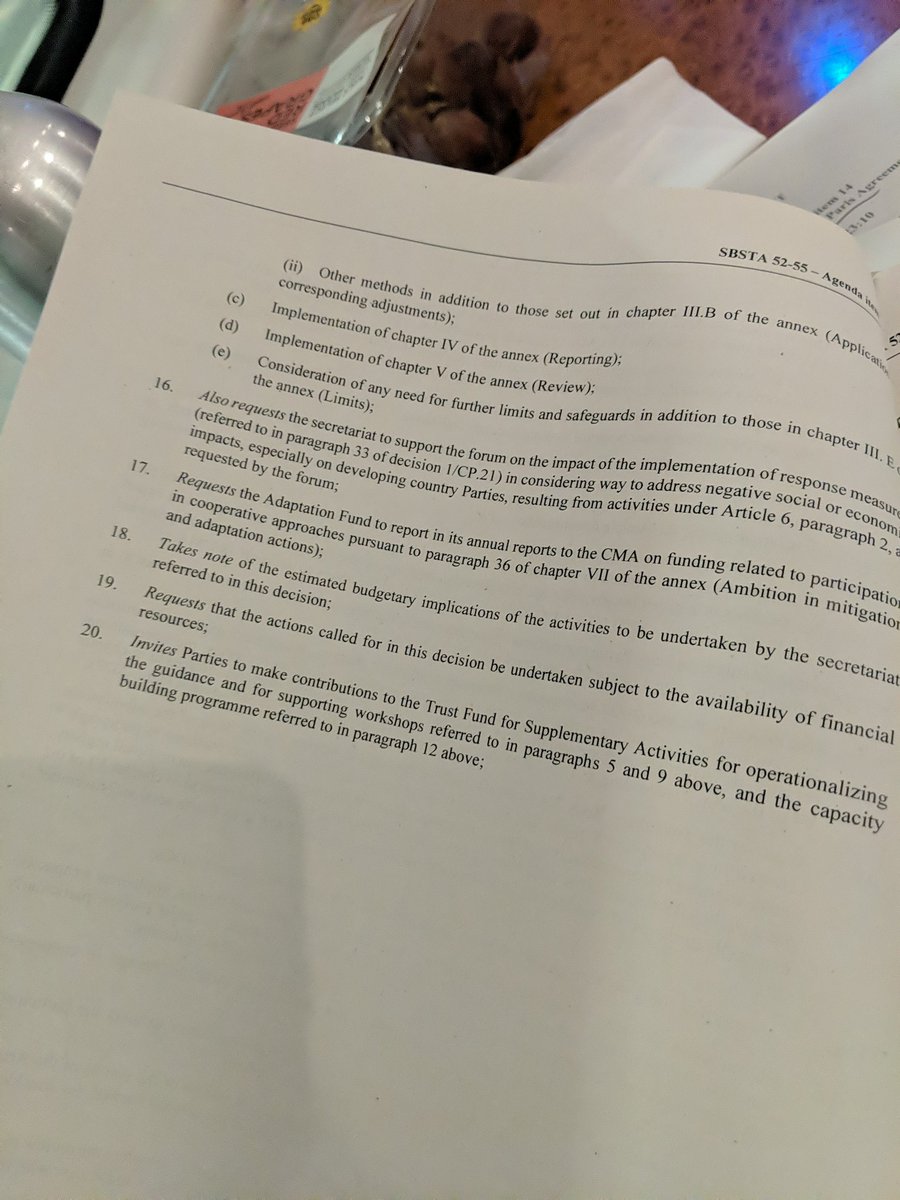Long train journey so some reflections on current draft #COP26 texts
Are they close to a deal?
TL;DR very very long way to go in key areas including transparency, Article 6, common timeframes etc
Are they close to a deal?
TL;DR very very long way to go in key areas including transparency, Article 6, common timeframes etc

In Article 6, latest texts include multiple refs to human rights, recalling the Paris text
(but NB non binding "should"…)
(but NB non binding "should"…)

Article 6.2 in particular includes a very lengthy to-do list of items that would be kicked down the road for later
There's pretty much 4 pages of "let's work this out later"



There's pretty much 4 pages of "let's work this out later"




As with Article 6.4, there's disagreement over whether there's a need to apply "corresponding adjustments" to avoid double counting for emissions cuts "outside" the sectors, gases [and policies and measures] covered by an NDC
(Note the brackets around the 2nd paragraph)
(Note the brackets around the 2nd paragraph)

There's also a developed be developing country fight over whether to use a "share of proceeds" to finance adaptation and "overall mitigation" under Article 6.2, as well as under 6.4 

Article 6.4 is even more contentious, with big disagreements remaining over double counting and the transition of Kyoto credits/activities (potential hot air) into Paris mechanism 

Other unresolved issues include the methodology for ensuring emissions cuts are additional to what would have happened anyway
One option would give wide leeway on how to do this…

One option would give wide leeway on how to do this…


On transparency -critical to check if countries live up to promises- the big fight is over "flexibility" for developing countries to not report fully - and whether they have to explicitly flag when they opt to use this "FLEX"
(AFAIU "No text" would mean not needing to fess up)

(AFAIU "No text" would mean not needing to fess up)


On "common time frames" for NDCs, the text remains packed full of nine (9!) separate options, covering all possible combinations of 5, 10, 5+5, 5 or 10 years (and more I haven't listed) 

That's it from me
Here's my earlier analysis of brackets in Article 6 texts, which is fairly crude but, having looked more closely, a fair indication of how much remains unresolved in the text
Here's my earlier analysis of brackets in Article 6 texts, which is fairly crude but, having looked more closely, a fair indication of how much remains unresolved in the text
https://twitter.com/DrSimEvans/status/1456536058322169856?t=P86o30j4lM1GyI1dSqnFaA&s=19
And here's an excellent detailed thread on Article 6
https://twitter.com/nataliejon_es/status/1456664086809305089?t=P86o30j4lM1GyI1dSqnFaA&s=19
• • •
Missing some Tweet in this thread? You can try to
force a refresh






















